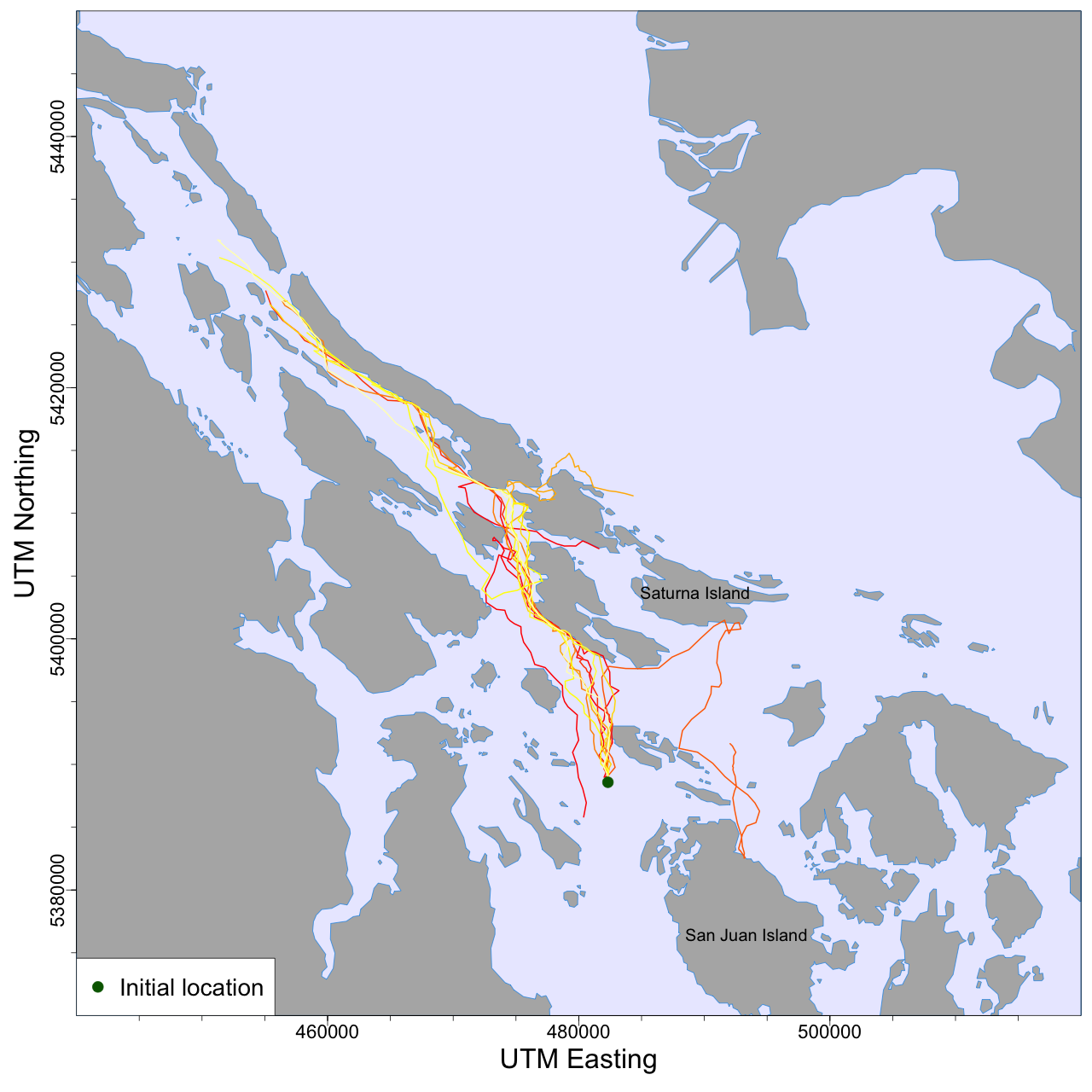The study of whale forecast systems has garnered significant interest in recent years, particularly in the realm of marine conservation and management. These highly social marine mammals, often moving in close-knit groups or pods, face significant challenges due to noise and physical disturbances caused by dense shipping traffic in their natural habitats. Therefore, it is of considerable interest to be able to accurately predict their movement. Our project main goal is to ultimately be able to forecast whale locations and alert vessel captains and ports when a whale is forecasted to be entering their path. In this way, risk-reducing measures such as adjusting vessel paths or reducing their speeds can be undertaken, minimizing acoustic disturbances and the risk of vessel collisions.

Our project focuses on developing a sophisticated whale forecast system that leverages visual sightings from citizen science groups, automated acoustic detections from hydrophones, and statistical modeling. By analyzing patterns from whale sightings and acoustic detections, the system can simulate realistic trajectories of SRKW pods. This approach allows us to generate predictions about where these whales are likely to be in the near future. By integrating these forecasts into maritime operations, we can significantly reduce the human impact on these creatures and contribute to their conservation.
This forecasting system can also help researchers and policymakers alike make informed decisions for the protection of whale populations and the preservation of their habitats. A model that relies solely on historical sightings of whales was developed as part of a SFU student master’s project, details of which are available in this thesis. You may also find interesting how this trajectory forecast model has helped guide our team on proposing conservation measures in the Tumbo Channel of the Salish Sea, for reducing the impact of vessel noise on this critical SRKW habitat.

